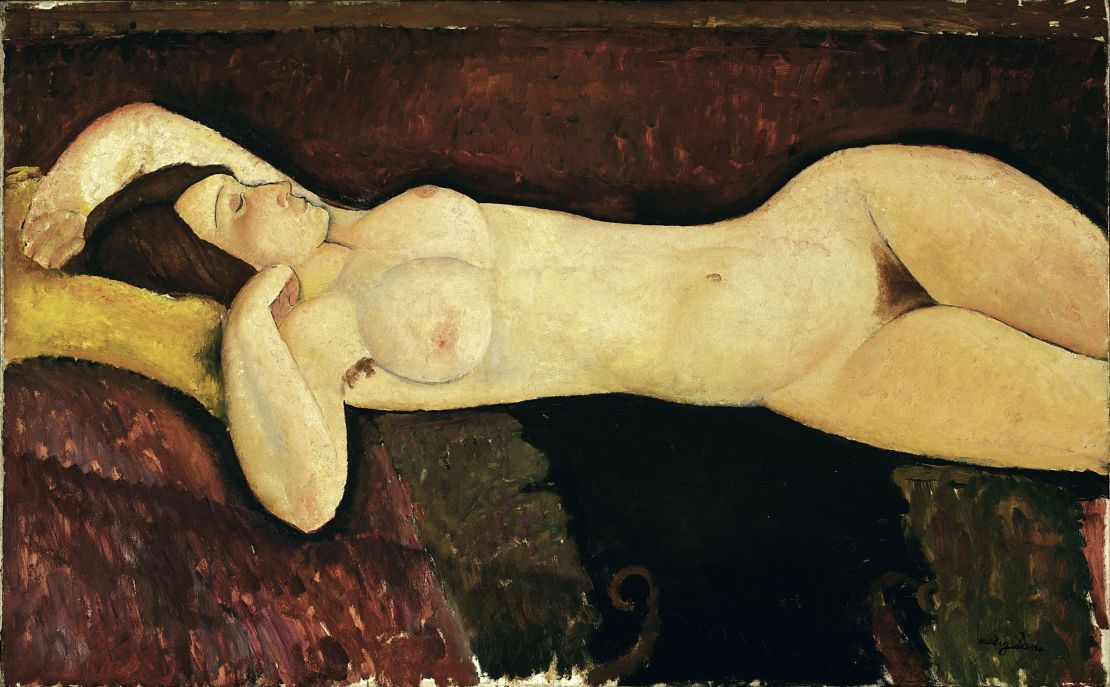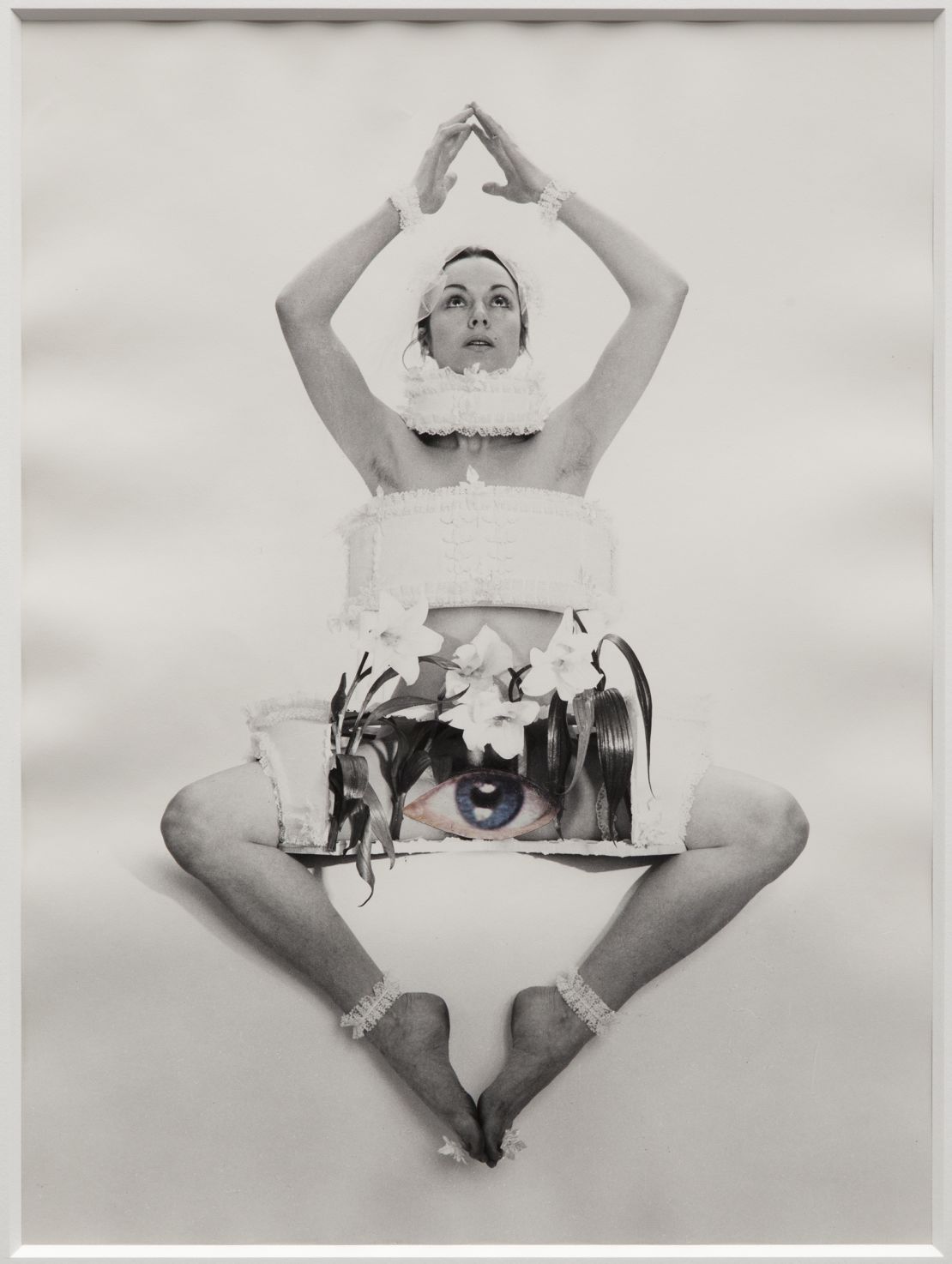This year marks the 100th anniversary of an exhibition of paintings by the Italian artist Amedeo Modigliani, at the Berthe Weill gallery in Paris. The exhibition, displaying a number of nude works, was too much for some and shut down within hours of its opening. The police commissioner at the time had been offended by the depiction of pubic hair.
“It really did shock people,” said Nancy Ireson, one of the curators of a new exhibition of Modigliani’s paintings at Tate Modern, “and some of the paintings had to be taken down.”
Upending traditions
To our contemporary eyes, Modigliani’s hirsute women are hardly shocking, in fact their poses reveal the painter to be in thrall to elegance and classicism. Yet, in rejecting the traditional hairless nudes of antiquity, Modigliani was seen to be attacking the social order – and in this, he was not alone.
Modigliani was part of a radical group of Belle époque artists, who wanted to subvert cultural conventions, and what better way of doing this than forcing people to confront how they see themselves?
Some painters, like Modigliani did it by sticking closely to the facts, others, like Picasso, tore the body apart and re-constructed it for the modern world. The nude had become a subject of challenge and contest. ?
If you subscribe to the aphorism that sex is really about power, Ireson suggests another reason to why Modigliani’s nudes were so shocking: “These women are overtly sexual and that really connects with the way women were troubling society at the time. These pictures were made during the First World War, when more women were working, more women were living independently … there really is a social anxiety about that.”

Censoring the nude
So began a golden era of the nude in Western art, thought not without censorship. In 1912, Austrian painter Egon Schiele, spent 24 days in jail convicted of immorality relating to hundreds of sketches of the naked form, and artists Otto Dix and George Grosz were both brought to trial for obscenity in the 1920s. Others preferred self-censorship rather than prosecution. René Magritte’s “The Rape” was concealed behind a velvet curtain when it was first exhibited in Brussels in 1934, with only Surrealist sympathizers permitted to see it. For Modigliani however the censorship of his nude paintings didn’t help sales – he died young and penniless in 1920.
Yet for all the trouble censorship caused these male artists, their reputation was rehabilitated and they went on to be celebrated as transgressive – even visionary – outsiders. Their nudes were lauded as sexually brave, raw and unconstrained. The same cannot be said of the women artists who came in their wake as a result of that burgeoning female autonomy.

The Fight Censorship Group
In the 1960s feminist artists began to represent the nude from a female perspective, reflecting a woman’s sexual desires. Artists like Joan Semmel, Judith Bernstein, Dorothy Iannone, Betty Tompkins, Anita Steckel and Penny Slinger appropriated pornography to present a different narrative to the one promoted by the sex industry. Inevitably censorship followed and it had a debilitating effect on their careers.
Slinger had her work burned by customs officials in 1978, Bernstein was forced to defend her graphic depictions of genitalia, while Steckel found herself at the mercy of the censors when attempts were made to close-down her exhibition of nude pictures at Rockland Community College, in New York. The college committee objected to the inclusion of images of erect penises. In response Steckel formed The Fight Censorship Group, and published a statement in which she declared “If the erect penis is not wholesome enough to go into a museum, it should not be considered wholesome enough to go into women. And if the erect penis is wholesome enough to go into women – then it is more than wholesome enough to go into the greatest art museums.”
The once-banned art of sex-positive feminist artists
Like Steckel, Tompkins and Ianonne also found the best way to confront censorship was through spirited rebuke. Tompkins’ photo-realistic paintings took their subject matter from hardcore pornographic magazines. When one of these paintings was impounded while on its way to France for an exhibition her retort was to create a series of large-scale sexually explicit drawings, in which the word “censored” covered the offending area. Alternatively, in 1970 when the Kunsthalle Bern attempted to cover up the genitalia in Ianonne’s paintings, she responded with a work that detailed the scandal and named the protagonists involved.
Surprisingly, for these female artists, confrontations with the law did not lead to notoriety – like it did for their male counterparts – but obscurity, and some of them ceased to exhibit altogether. Yet the world has changed in the last ten years, and artists like Tompkins and Iannone are having a resurgence thanks to a group of younger curators and artists who are beginning to understand how these pioneering feminist artists played a crucial role in creating the sex positive attitude that exists in the mainstream media today. Through their brave, uncompromising depictions of the nude, the fig leaves are finally coming off.
“Modigliani” is on display at Tate Modern until Apr. 2, 2018.














